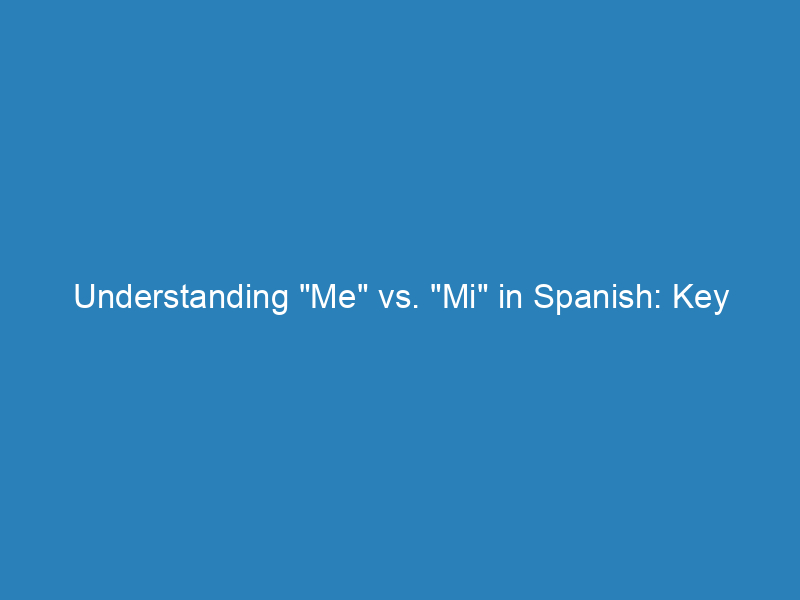
Understanding “Me” vs. “Mi” in Spanish: Key Differences and Usage
Understanding the nuances of the Spanish language can be a rewarding experience, especially when it comes to differentiating between seemingly similar words. In Spanish, “me” and “mi” may look alike, but they serve distinct grammatical purposes. Let’s delve into what sets these two apart.
Pronunciation Differences
The first notable difference is how each word is pronounced. In Spanish, vowels maintain consistent sounds, unlike in English, where the same letter can produce various sounds depending on its context. Here’s a quick breakdown:
- Mi – pronounced /mee/, similar to the English words “me,” “we,” and “see.”
- Me – pronounced /meh/, akin to the English words “pet,” “met,” and “red.”
Using “mi” in Spanish
“Mi” serves as a possessive adjective and translates to “my” in English. It is used before a noun to indicate ownership. For instance:
- ¿De quién es el celular? (Whose cell phone is it?)
- Es mi celular, gracias. (It’s my cell phone, thanks.)
In plural forms, “mi” changes to “mis”:
- ¿Dónde están mis zapatos? (Where are my shoes?)
- Tengo que doblar mis camisas. (I have to fold my shirts.)
Using “me” in Spanish
On the other hand, “me” is more versatile, functioning as a direct object pronoun, an indirect object pronoun, and a reflexive pronoun. Let’s explore each usage:
Direct and Indirect Object Pronouns
For example, in the sentence “I threw the ball to Sam,” the ball is the direct object and Sam is the indirect object. In Spanish, this translates to:
- El perro me mordió. (The dog bit me.)
- Gabriel no me compró un regalo. (Gabriel didn’t buy me a gift.)
Reflexive Pronouns
Some Spanish verbs are reflexive, meaning the action is directed back at the subject. Examples include:
- Me llamo Alison. (I call myself Alison.)
- Me baño cada día. (I bathe myself every day.)
Practice Makes Perfect
To reinforce your understanding, try these exercises. Fill in the blanks with either “me” or “mi”:
- Juan ___ llamó ayer. (Juan called __ yesterday.)
- No es ___ bolsa. (It’s not ___ bag.)
- ___ mamá está en el salón. (___ mom is in the room.)
Here’s the answer key to check your work:
- 1. me
- 2. mi
- 3. mi
In summary, mastering the distinction between “me” and “mi” can significantly enhance your Spanish language skills. Understanding these differences not only helps in communication but also enriches your grasp of the language’s structure.

